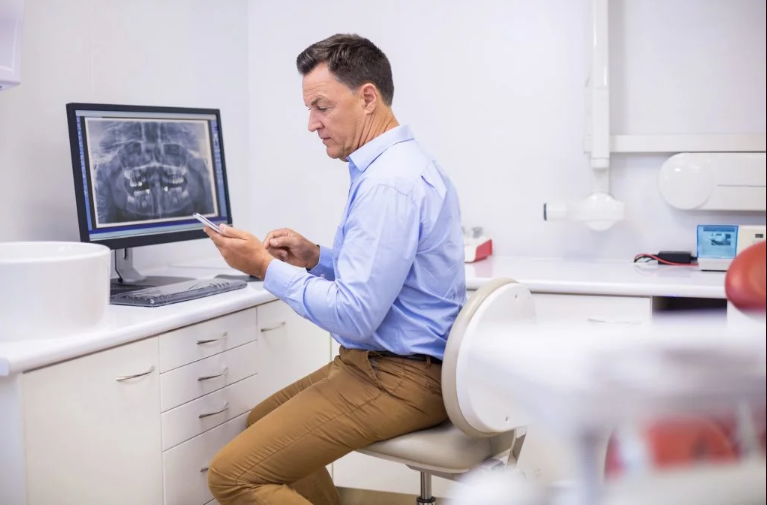Teledentistry is an innovative way for dentists to care for their patients remotely. It involves using telecommunications technology, such as telephones and video conferencing software, to deliver dental services from a distance. With teledentistry, your practice can expand its reach, reduce costs associated with in-person appointments, and even boost patient satisfaction.
If you’re interested in starting with Teledentistry in your dental practice, this article will provide you with all the information you need to get started. We’ll discuss how teledentistry works, the steps to get started, and its benefits.
So, let’s dive in.
How does Teledentistry Work?
Teledentistry is a way for dentists and patients to connect remotely over the internet. Through this process, dentists can provide care to patients who cannot physically make it into their offices while still providing quality care from the comfort of home.
The most common forms of teledentistry are teleconsultation and telediagnosis. During a teleconsultation, the dentist interviews the patient about their oral health history and any current complaints or concerns. The dentist can then assess the patient’s condition and recommend appropriate treatment options to address the issue at hand.
During a telediagnosis appointment, digital images may be taken with intraoral cameras or digital x-rays that can be viewed remotely. This allows the dentist to accurately diagnose the patient’s condition without having to be physically present in the office.
Steps to Implement Teledentistry Process
1. Determine which teledentistry software you want to use: Choose a secure, HIPAA-compliant platform that can provide the virtual services your practice needs and integrates with your existing systems.
2. Train staff and providers: Make sure all of the staff in your practice are familiar with how the telehealth technology works and any privacy regulations around its use.
3. Educate patients on teledentistry: Provide information about teledentistry to your patients, so they know what to expect and feel comfortable using it when necessary. This could include online resources or an informational brochure in each patient’s welcome packet.
4. Set up appointments: Add a “teledentistry” option to your online appointment book or call center. This will allow patients to easily and quickly schedule virtual appointments with you.
5. Create a virtual waiting room: Utilize secure, interactive patient portals to open a “virtual waiting room” where patients can check in for their teledentistry visits and fill out forms prior to the session.
6. Track progress: Monitor performance and assess patient satisfaction levels with teledentistry services on an ongoing basis to ensure that it meets expectations.
7. Evaluate results: Measure the impact of teledentistry by tracking key metrics such as number of appointments booked, types of services provided, overall patient satisfaction rates, etc.
By following these steps, you can ensure that your dental practice can successfully integrate teledentistry into its existing systems and processes.
Benefits of Teledentistry
Mentioned below are the significant benefits of teledentistry:
- Increased Accessibility of Care: The most apparent benefit of teledentistry is that it allows dental care to be provided to those who may not have easy access to a dental professional due to geographical or financial constraints.
- Improved Efficiency in the Practice: Teledentistry also helps improve patient flow by eliminating unnecessary appointments and reducing wait times.
- Improved Patient Engagement: By allowing patients to access dental care remotely, teledentistry helps foster better relationships between dentists and their patients.
- Enhanced Diagnostic Capabilities: Teledentistry can conduct remote consultations, view images and records electronically, and perform virtual exams that might not otherwise be possible in person.
- Cost Savings: Teledentistry is often more cost-effective than traditional in-person appointments due to reduced overhead expenses such as travel time and gas costs.
The Bottom Line
Teledentistry is an invaluable tool for dental practices today. It helps to reduce the amount of time and resources needed to provide patient care, improves access to remote areas, and increases practice efficiency. By creating a digital infrastructure in your practice with teledentistry, you can quickly get started providing high-quality dental care from wherever your patients are located.

















